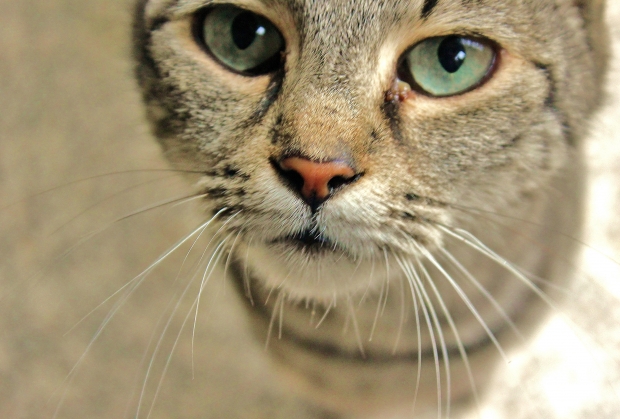 Feline Rabies is an inflammatory infection that specifically affects the gray matter of the cat’s brain and its central nervous system (CNS). The primary way the rabies virus is transmitted to cats in the United States is through a bite from a disease carrier: foxes, raccoons, skunks, and bats. Infectious virus particles are retained in a rabid animal’s salivary glands to better disseminate the virus through their saliva.
Feline Rabies is an inflammatory infection that specifically affects the gray matter of the cat’s brain and its central nervous system (CNS). The primary way the rabies virus is transmitted to cats in the United States is through a bite from a disease carrier: foxes, raccoons, skunks, and bats. Infectious virus particles are retained in a rabid animal’s salivary glands to better disseminate the virus through their saliva.
Once the virus enters the cat’s body, it replicates in the cells of the muscles and then spreads to the closest nerve fibers, including all peripheral, sensory and motor nerves, traveling from there to the CNS via fluid within the nerves. The virus can take up to a month to develop, but once the symptoms have begun, the virus progresses rapidly.
Diagnosis
If your suspect your cat has rabies, call your veterinarian immediately. If it safe to do so, cage your cat, or otherwise subdue, and take it to a veterinarian to be quarantined. If your cat is trying to attack or behaving viciously, and you feel you are at risk of being bitten or scratched, you must contact animal control to catch your cat for you.
Your veterinarian will keep your cat quarantined in a locked cage for 10 days. This is the only acceptable method to confirming suspected rabies infection. Rabies can easily be confused with other conditions that cause aggressive behavior, so a laboratory blood analysis must be performed to verify the presence of the virus.
Diagnosis is usually done using a a post-mortem direct fluorescence antibody test performed by a state-approved laboratory for rabies diagnosis. Fluid samples will be collected if your cat dies while in quarantine, or if it begins showing progressive signs of rabies. In this case, your veterinarian will opt to put your cat to sleep.
Treatment
Provide proof of vaccination to your veterinarian if your cat has been vaccinated against rabies. If you or anyone came into with the cat’s saliva, or were bitten by your cat, it is advised for them to contact a physician immediately for treatment. Unfortunately, for unvaccinated animals rabies is always fatal. This usually occurs within 7 to 10 days from when the initial symptoms began.
Living and Treatment
Using a 1:32 dilution (4 ounces to a gallon) of household bleach solution, disinfect any area the cat might have infected (especially with saliva) to quickly inactivate the virus. Avoid coming into contact with your cat’s saliva.
Do not reach into your cat’s mouth without taking precautions if it has swallowed an object. Saliva can into your skin through an accidental scratch, putting you at risk of becoming infected with the virus.
For more information about Feline Rabies, click the “Contact Us” link below.















